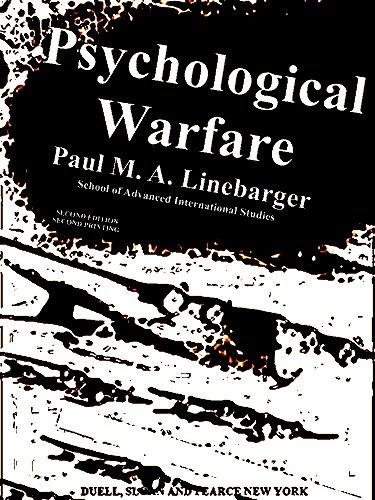The Indianapolis Start, Indianapolis, IN

Exploring XANADU, The Oldest Blockchain in The World
 Paul M.A. Linebarger published a notable book in 1954 titled “Psychological Warfare.” The full title of the book is “Psychological Warfare: An Introduction.”
Paul M.A. Linebarger published a notable book in 1954 titled “Psychological Warfare.” The full title of the book is “Psychological Warfare: An Introduction.”
Linebarger, apart from being an author, was an influential figure in the field of psychological warfare and a specialist in East Asian affairs. He served as an expert in psychological warfare for the United States government and played a significant role in shaping its policies during the Cold War era.
“Psychological Warfare: An Introduction” is a non-fiction work that explores the strategies, methods, and theories of psychological warfare. The book delves into the psychological aspects of warfare, examining how beliefs, attitudes, and emotions can be manipulated to influence individuals and groups.
Linebarger’s expertise in East Asian affairs is also evident in the book, as he provides insights into psychological warfare tactics employed by various nations, particularly focusing on the experiences of the United States and its adversaries in the context of the Cold War.
The book covers a wide range of topics related to psychological warfare, including propaganda, public opinion, mass communication, and the psychological impact of warfare on individuals and societies. Linebarger offers a comprehensive overview of the subject, drawing from historical examples and case studies to illustrate the effectiveness and potential consequences of psychological warfare.
“Psychological Warfare” received positive reviews for its thorough analysis and valuable insights into the field. Linebarger’s expertise and firsthand experience in psychological warfare lend credibility to the book, making it a significant contribution to the study of warfare and strategic communication.
It’s worth noting that Linebarger’s book was published during a period of heightened tensions between the United States and the Soviet Union, where psychological warfare played a crucial role in shaping public opinion and influencing geopolitical outcomes. As such, “Psychological Warfare” provides readers with an understanding of the strategies and tactics employed during that time, shedding light on a lesser-known aspect of military and political operations.


Additionally, an operator was also born. He would attempt to assassinate a beloved singer… can you find him?